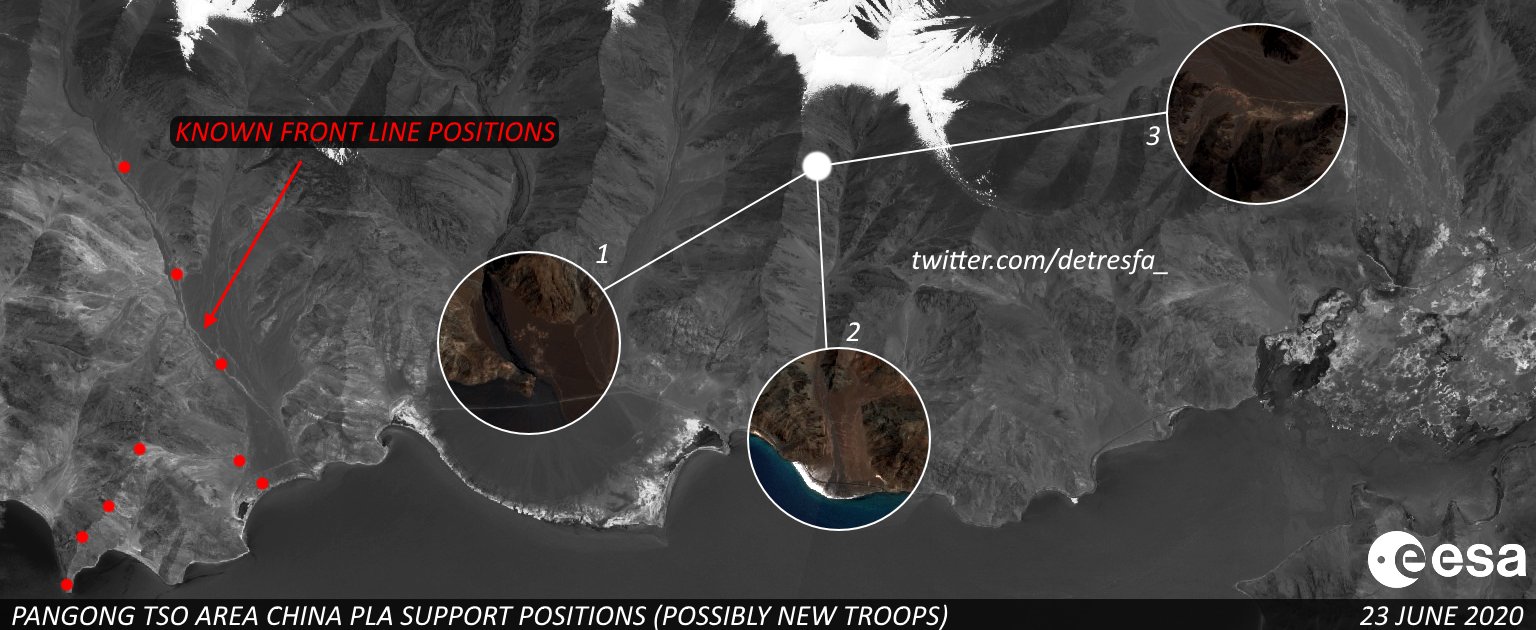The new flashpoint between India and China, the southern bank of Pangong Tso, has a flatter terrain than the northern bank which provides access to eastern Ladakh and important heights of Rezang La further east, according to experts.
Former Director-General of Military Operations Lt. Gen. Vinod Bhatia (retd), talking to ThePrint pointed out that the southern bank of Pangong Tso is less operationally and tactically important than the northern bank, so China could just be “posturing”, and attempting to expand its scope of operations in the region.
“On the northern bank, a road from the east comes right up to finger 4, as compared to the southern bank, where the road ends far to the east,” he said.
Another officer explained that the terrain at the southern bank is flatter as compared to the northern bank and can be susceptible to “limited mechanized warfare in the Chushul sector.”
The heights surrounding the area are in the range of 16,000 -18,000 ft. Further to the south-east of the Pangong Tso is the Spangur Gap between the mountains, which can be used by the Chinese to advance towards Leh in case of a major offensive in the sector, the officer said. “This makes it important for Indian troops to hold Rezang La and adjoining heights to dominate any Chinese troop movement.”
Another army officer stated that it is imperative to safeguard the southern bank as the area can be exploited by the enemy to get access to the strategically important Durbuk-Shyok-Daulat Beg Oldi (DSDBO) road.
A prominent twitter user @detresfa who has been tracking PLA’s through satellite imagery, posted in June satellite images of Chinese PLA’s camps and support positions at the southern bank of Pangong Tso.
Satellite images from earlier today help spot #China's PLA troop support positions mushrooming all over the #PangongTso lake area #IndiaChinaFaceOff pic.twitter.com/lyfG4aD0I8
— d-atis☠️ (@detresfa_) June 23, 2020
Former 14 Corps commander Lt. Gen. P.J.S. Pannu (retd) said the southern bank gives the Indian troops an edge in terms of monitoring the activities in the northern bank. “There has been a hardening of military posturing in the southern bank, too, by the Chinese, given that Indian troops hold certain significant heights in the region,” he said.
Tensions have been brewing on the Line of Actual Control for months now. Amid already heated border row, Indian and Chinese troops were involved in a fresh flare-up on the night of 29-30 August at the southern bank Pangong Tso lake in eastern Ladakh.
Both the neighbors have blamed each other for initiating the flare-up. The Army said Indian troops pre-empted this PLA activity on the southern bank of Pangong Tso and undertook measures to strengthen positions and thwart Chinese intentions to unilaterally change facts on the ground.
While the Indian Army is saying that “the provocative military movements have been carried out by Chinese troops, the Chinese People’s Liberation Army (PLA) has demanded the “Indian side to immediately withdraw its troops that illegally trespassing the border-line.”
This clash wasn’t as severe as the one in June that took place in the Galwan valley that killed 20 Indian soldiers and undisclosed Chinese soldiers. A Brigade Commander level Flag Meeting was held to resolve the matter.





